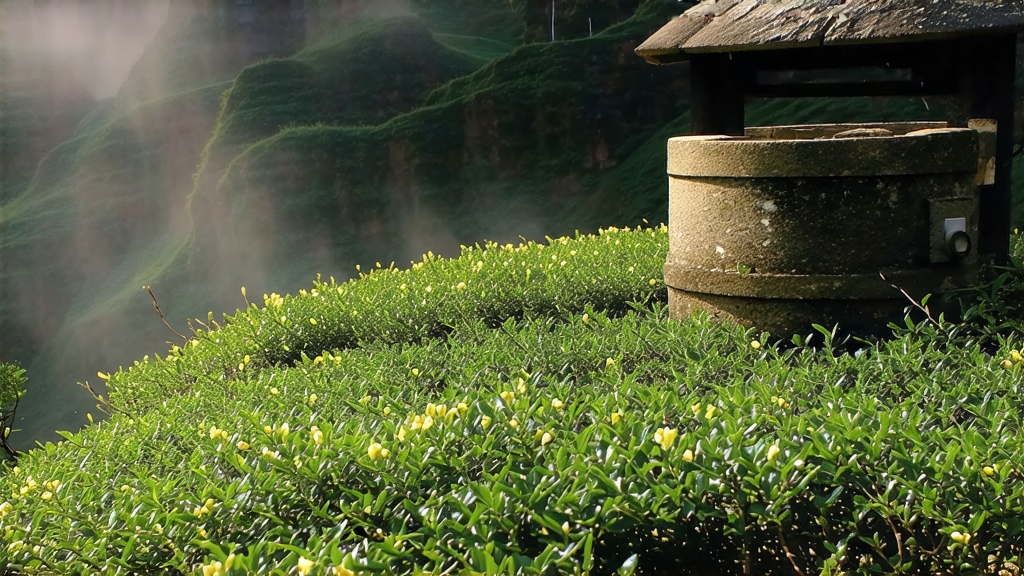
If green tea is the fresh-faced youth of Chinese tea and pu-erh the wise elder, then yellow tea occupies the subtle, elusive middle ground—an aristocrat who speaks in whispers. Among the three celebrated yellow teas granted national protection status, Meng Ding Huang Ya from Sichuan’s Ya’an region is the oldest recorded yet least encountered beyond China’s borders. Its story begins on Meng Ding Mountain, literally “Peak of the Mist,” where Daoist monks planted tea during the Western Han dynasty (53 BCE). Tang dynasty (618-907) tribute lists already specified “Huang Ya” as the first spring offering to arrive in Chang’an, transported by fast horse along the ancient Tea Horse Road. Song emperor Huizong, himself a tea connoisseur, declared it one of the two teas worthy of imperial ritual, cementing a reputation that lasted until the late Qing, when green tea fashions eclipsed the slower, costlier yellow craft. Forgotten for almost a century, Meng Ding Huang Ya re-emerged in 1959 when state tea engineers sought to revive historical tribute varieties; today only 280 hectares of state-designated gardens are authorised to bear the name.
Meng Ding Huang Ya belongs to the “bud yellow tea” subtype, meaning it is made almost exclusively from the unopened spear-shaped bud, occasionally with one just-unfurling leaf. Plucking occurs during the 15-day window around Qingming festival when dawn mist and 65 % humidity keep the buds succulent. Experienced pickers use a twisting snap rather than a pull to prevent oxidation enzymes from rupturing—tiny details that decide whether the leaf will later “yellow” evenly. The daily harvest must reach the village workshop within two hours; trays of buds are then spread 2 cm thick on bamboo mats for six hours of withering under natural mountain breeze, reducing moisture to 68 %.
What follows is the hallmark “sealed yellowing” (men huang) that distinguishes yellow from green tea. Buds are wok-fired at 180 °C for four minutes—just long enough to kill grassiness—then immediately wrapped in thick cotton cloth bundles the size of a pillow. These bundles are stacked inside a wooden chest lined with wet straw; residual heat and humidity climb to 45 °C, triggering non-enzymatic browning that tints the bud tips a pale primrose and converts catechins into softer theaflavins. Every 40 minutes the master unwraps, re-tosses the buds by hand to redistribute heat, then re-wraps, repeating the cycle six to eight times through the night. By dawn the leaves have acquired a faint “rice-sweet” note impossible to coax from any other process. A final low-temperature bake at 60 °C for two hours sets the aroma before the tea is rested for three days in lime-lined earthen jars, allowing internal moisture to homogenise.
The finished leaf is slim and slightly hooked, the colour a muted avocado green with visible golden down. Aroma is discreet: steamed maize, freesia, and a suggestion of raw almond. Once brewed, however, the liquor glows like chardonnay and releases layers of flavour that oscillate between green tea’s brightness and black tea’s malt. The first infusion carries a cool cucumber note; the second, a lychee sweetness; the third, a creamy orchid finish that lingers on the sides of the tongue. Chemically, the sealed yellowing reduces EGCG content by roughly 18 % compared with a sister green tea from the same garden, explaining the absence of harsh astringency and the satiny mouthfeel.
To unlock these subtleties, water must be soft and low in minerals; mountain spring water is ideal, but filtered water passed through bamboo charcoal works. Heat water to 85 °C—any hotter scalds the downy buds; any cooler fails to lift the lactones. A 120 ml gaiwan accommodates four grams of dry leaf, giving a leaf-to-water ratio of 1:30. After pre-warming the vessel, shake the dry buds inside the lid for three seconds; the gentle friction awakens aroma. Use the “three-point pour” technique: raise the kettle 15 cm above the gaiwan and pour in three concentric circles, finishing at the centre to submerge the buds evenly. Infuse 45 seconds for the first steeping, adding ten seconds for each subsequent infusion up to six. Observe the leaves: high-grade buds stand upright like miniature spears before drifting horizontally, a phenomenon locals call “the soldier’s sal